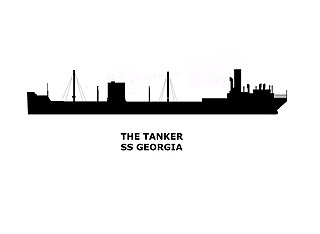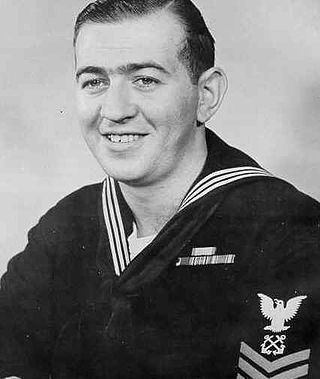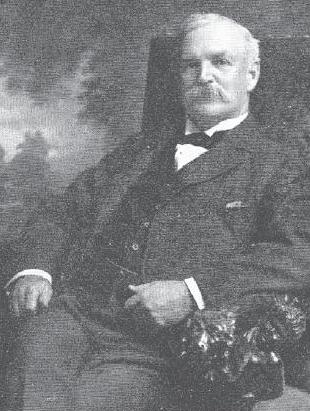Hilda Marjanne was a Canadian straight deck bulk carrier operating on the Great Lakes.

The T2 tanker, or T2, was a class of oil tanker constructed and produced in large numbers in the United States during World War II. Only the T3 tankers were larger "navy oilers" of the period. Some 533 T2s were built between 1940 and the end of 1945. They were used to transport fuel oil, diesel fuel, gasoline and sometimes black oil-crude oil. Post war many T2s remained in use; like other hastily built World War II ships pressed into peacetime service, there were safety concerns. As was found during the war, the United States Coast Guard Marine Board of Investigation in 1952 stated that in cold weather the ships were prone to metal fatigue cracking, so were "belted" with steel straps. This occurred after two T2s, Pendleton and Fort Mercer, split in two off Cape Cod within hours of each other. Pendleton's sinking is memorialized in the 2016 film The Finest Hours. Engineering inquiries into the problem suggested the cause was poor welding techniques. It was found the steel was not well suited for the new wartime welding construction. The high sulfur content made the steel brittle and prone to metal fatigue at lower temperatures.
The history of the United States Coast Guard goes back to the United States Revenue Cutter Service, which was founded on 4 August 1790 as part of the Department of the Treasury. The Revenue Cutter Service and the United States Life-Saving Service were merged to become the Coast Guard per 14 U.S.C. § 1 which states: "The Coast Guard as established January 28, 1915, shall be a military service and a branch of the armed forces of the United States at all times." In 1939, the United States Lighthouse Service was merged into the Coast Guard. The Coast Guard itself was moved to the Department of Transportation in 1967, and on 1 March 2003 it became part of the Department of Homeland Security. However, under 14 U.S.C. § 3 as amended by section 211 of the Coast Guard and Maritime Transportation Act of 2006, upon the declaration of war and when Congress so directs in the declaration, or when the President directs, the Coast Guard operates as a service in the Department of the Navy.
SS Sackett's Harbor was a T2 tanker that was built in August 1943. She served in the United States Merchant Marine during World War II. The ship was a namesake of Sackets Harbor, New York.

SS Georgia was an oil tanker that was built in the United States in 1908 as Texas and spent most of her career in the United States Merchant Marine. In 1917 she was renamed Georgia. In 1927 she was transferred to Dutch ownership, and shortly thereafter ran aground and was lost on Haisborough Sands off the coast of Norfolk, England.

USS Yakutat (AVP-32) was a United States Navy Barnegat-class small seaplane tender in commission from 1944 to 1946. Yakutat tended seaplanes in combat areas in the Pacific during the latter stages of World War II. After the war, she was in commission in the United States Coast Guard from 1948 to 1971 as the Coast Guard cutter USCGC Yakutat (WAVP-380), later WHEC-380, seeing service in the Vietnam War during her Coast Guard career. Transferred to South Vietnam in 1971, she was commissioned into the Republic of Vietnam Navy as the frigate RVNS Trần Nhật Duật (HQ-03). When South Vietnam collapsed in 1975 at the end of the Vietnam War, she fled to the Philippines, where the Philippine Navy took custody of her and cannibalized her for spare parts until discarding her in 1982.

The SS James B. Stephens was a 7,176-ton American liberty ship in World War II. She was built by the Oregon Shipbuilding Corporation of Portland, Oregon in 1942 with the hull number 580, and operated by United States Lines, New York City and homeported in Portland. For her role of sailing in dangerous waters, she was armed with one 5in, one 3in and four 20mm guns. She was named for the founder of East Portland.

SS Fort Lee was a T2 tanker built for the United States Maritime Commission during World War II. The ship was assigned by the War Shipping Administration for operation by the Bernuth Lembcke Co. and operated in the Atlantic and Mediterranean early in its career.

Coast Guard Motor Lifeboat CG-36500 is a historic, 36-foot lifeboat that is berthed at Rock Harbor in Orleans, Massachusetts. Built in 1946, it is notable for its involvement in the 1952 SS Pendleton rescue, one of the most daring such events recorded in the history of the United States Coast Guard. It was listed on the National Register of Historic Places in 2005, and now serves as a museum boat.
SS Pan-Pennsylvania was a Type T3-S-BF1 tanker of the United States, which was sunk by German U-boat U-550 in April 1944.
Esso Brussels was a commercial oil tanker built for the Esso Oil company in 1959. She was involved in a collision in 1973 in which thirteen of her crew perished. She was rebuilt and sailed under various other names until being scrapped in 1985.

The February 1952 nor'easter was a significant winter storm that impacted the New England region of the United States. The storm ranked as Category 1, or "notable", on the Northeast Snowfall Impact Scale. Its rapid intensification resulted in heavy snowfall between February 17 and 18, accumulating to 12 to 30 inches. High winds also affected central and northern New England. The nor'easter is estimated to have caused 42 fatalities. In Maine, over 1,000 travelers became stranded on roadways. Two ships cracked in two offshore New England during the storm.
MV C.O. Stillman was an oil tanker that was built by a German shipyard in 1928 for a Canadian-based shipping company. A Panamanian subsidiary of Esso bought her at the end of 1936 and she was sunk by the German submarine U-68 in the Caribbean on June 4, 1942 about 41 nautical miles (76 km) southwest of Isla de Mona, Puerto Rico.

The Finest Hours is a 2016 American action thriller film directed by Craig Gillespie and produced by Walt Disney Pictures. The screenplay, written by Eric Johnson, Scott Silver, and Paul Tamasy, is based on The Finest Hours: The True Story of the U.S. Coast Guard's Most Daring Sea Rescue by Michael J. Tougias and Casey Sherman. The film stars Chris Pine, Casey Affleck, Ben Foster, Holliday Grainger, John Ortiz, and Eric Bana, and chronicles the historic 1952 United States Coast Guard rescue of the crew of SS Pendleton, after the ship split apart during a nor'easter off the New England coast.

SS Pendleton was a Type T2-SE-A1 tanker built in 1942 in Portland, Oregon, United States, for the War Shipping Administration. She was sold in 1948 to National Bulk Carriers, serving until February 1952 when she broke in two in a storm. The T2 tanker ships were prone to splitting in two in cold weather. The ship's sinking and crew rescue is the topic of the 2009 book The Finest Hours: The True Story Behind the US Coast Guard's Most Daring Rescue, by Michael J. Tougias. Tougias' book inspired the 2016 Disney-produced film The Finest Hours with Chris Pine, which focuses on the Pendleton rescue.

Daniel Webster Cluff was a United States Coast Guard officer who led one of the U.S. Coast Guard's largest small-boat rescue operations in the midst of a New England winter storm on February 18 through 19, 1952, as Chatham Lifeboat Station's officer-in-charge. Warrant Officer Cluff's expertise in small-boat life-saving operations and confidence in his men's abilities resulted in Coast Guard Motor Lifeboat CG 36500 crew's rescue of thirty-two survivors from the stern section of SS Pendleton "only minutes before it capsized."

Bernard Challen Webber was a United States Coast Guardsman. He was a petty officer assigned to Coast Guard Station Chatham, Massachusetts, where one of his duties was that of coxswain of Coast Guard Motor Lifeboat CG 36500. Webber and his crew of three rescued the crew of the stricken T2 tanker SS Pendleton, which had broken in half during a storm on February 18, 1952 off Cape Cod. Webber maneuvered the 36-foot lifeboat under Pendleton's stern as the tanker's crew, trapped in the stern section, abandoned the wreck of their ship on a Jacob's ladder into the Coast Guard motor lifeboat.

The United States Coast Guard's series of motor lifeboats included a class of 36 foot motor lifeboats. The Coast Guard built the first of version these vessels in 1929, and retired the last active version, in 1987 as they were replaced by the 44 foot Steel Hull Motor Lifeboat. CG 36500 was retired from active service in 1968, and has since been restored and preserved as a floating museum. These vessels are remembered for the daring rescues Coast Guard seamen performed, using them.
Oklahoma was a steam tanker built in 1907-1908 by New York Shipbuilding Co. of Camden for the J. M. Guffey Petroleum Company, with intention of transporting oil and petroleum products to ports along the East Coast of the United States and Europe. In January 1914 the tanker ran into a gale and broke in two and sank with a loss of twenty six men.

Barber Asphalt Company of Washington, D.C. started in 1883 was founded by Amzi L. Barber. Barber, born in 1843. Barber first career was a teaching professor, he moved to real estate. In real estate, he found the problem of needing affordable paved roads. He found that asphalt was a great affordable material for paved roads. He added asphalt shingles to his products. In 1879 he moved Headquarters to New York City. He had offices in Washington, D.C. from 1878 to 1912, Philadelphia, Pennsylvania from 1912 to 1938 and Maurer, Perth Amboy, New Jersey from 1938 to 1948. In 1888 Barber leased the largest know asphalt deposit at Pitch Lake Trinidad. Barber opened a subsidiary, called the Iroquois division, and Iroquois Electric Refrigeration Company. Elkins Widener purchased the company in 1898 and merged with his Trinidad Corporation subsidiary. This formed the Asphalt Company of America of New York. In 1899 Asphalt Company of America was sold to John M. Mack and renamed, National Asphalt Company of America. In 1901 Barber retired from the Barber Asphalt Company. National Asphalt Company of America closed in 1902. In 1903 it opened again as General Asphalt Company. Uintah Railway Company was founded in 1903 by the Barber Asphalt Paving Company. Barber has paved millions of miles of roads. In 1904 Barber returned the company. In the 1920s Barber Asphalt Company opened a refinery in Perth Amboy, New Jersey at the time the town was known as Barber. The Barber Asphalt refinery is now the Perth Amboy Refinery. General Asphalt and Barber division merged in 1936. After the merger, the name was changed to Barber Company, Inc.. In 1938 the name was changed to Barber Asphalt Corporation. Barber Asphalt entered into a joint venture with Standard Oil Company of California in 1946. The joint venture was called California Refining Company.













